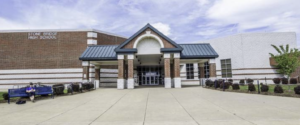by James C. Sherlock
So, let’s examine a theoretical.
A kid gets thrown out of a high school for a suspected rape.
The (ex-) superintendent places him in another high school awaiting trial.
He rapes again.
What’s wrong with this picture? OK, lots of things.
But let’s examine just one solution that can have wider applicability.
Why could not that alleged (at the time) criminal, or any suspended kid, participate remotely with his classes broadcast to him?
The equipment to do so is available in public schools all over the state after COVID. It is also available in our institutions of higher learning (IHE).
From the VDOE Positive Behavioral Interventions and Supports (PBIS) web page
PBIS helps teachers and administrators learn about and implement new techniques that reduce disruptive student behavior, which typically leads to office referrals, in school suspensions, and out-of-school suspensions that decrease instructional time for students.
From the JLARC report on Pandemic Impact on Public K-12 Education.
Chronic absenteeism and student behavior were major concerns as students returned to in-person instruction.
A misbehaving student is more likely to struggle academically and can distract other students. Extreme cases of poor behavior can even make other students feel less welcome or safe in their school environment, which negatively contributes to their ability to be engaged and learn.
Let’s admit we can’t implement all of the JLARC recommendations, many of which are restricted in their execution by lack of qualified personnel.
But we can do four things:
- Get disruptive and potentially dangerous students out of the school buildings, which addresses both danger and classroom disruption;
- Offer them remote instruction from their own classrooms to address the reduced instructional time concerns;
- Make temporary removal non-punitive with the goal of either completing investigations or enabling positive interventions that show results; and
- Make in-school positive support systems for troubled students available remotely as well.
Remote video technology enables that solution. And, post-COVID, the equipment is broadly available.
I recommend that VDOE examine that solution and report. The JLARC report has done a lot of the homework.
Meanwhile, local school boards and IHE Boards of Visitors can consider making changes in their own domains.
- Offer a non-punitive alternative to suspension.
- Create a voluntary (by parents of minors or by the students themselves for older persons) temporary remote-learning option in lieu of suspension pending investigations of suspected threats at both K-12 and IHE levels. If they don’t volunteer, suspend them for safety reasons.
- Provide that same voluntary option for routinely disruptive K-12 students in lieu of suspension and offer remote professional behavioral supports, including community supports not available in the schools. If they don’t volunteer, suspend them for school learning environment reasons.
- Offer a non-punitive alternative to expulsion. Offer a transfer in lieu of expulsion to public school students to a full-time remote learning option like either the VDOE program or the privately-run, state funded options. Some divisions have separate facilities for such students. Many don’t. If they don’t volunteer, expel them.
In each case, the school division should attempt to provide appropriately equipped and supervised facilities for students who don’t have the necessary home conditions and/or infrastructure for remote learning.
The federal Department of Education will be pleased with these voluntary, non-punitive alternatives that will not be subject to annual reporting.
These are not perfect solutions. Perfect solutions don’t exist. Technology, however, now offers these options. It also allows necessary removals as voluntary measures without a record of punitive action.
Technology-enabled non-punitive removal, under whatever name we choose to call it, would, not incidentally, boost teacher morale and make the schools safer.
Updated Dec 8 at 1320 to clarify the term voluntary.



